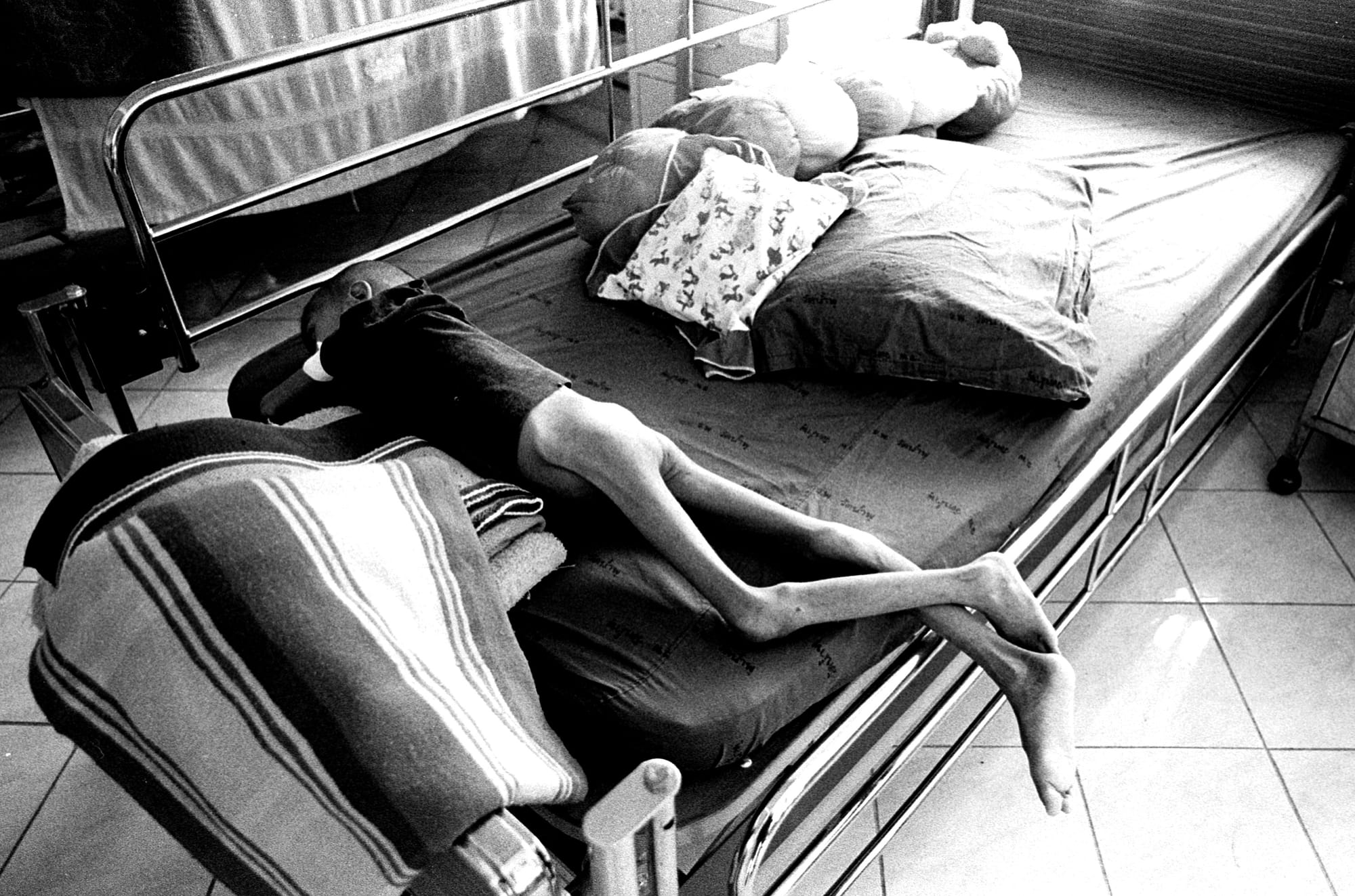A Lonely Death -Understanding AIDS

A Lonely Death -Understanding AIDS
story & photographs by Andy Rain
A few kilometers up a bumpy dirt track, through flourishing corn fields, sat beneath densely forested hills, people from all over Thailand come to find a place to hide away during the last days of their life. Here in Wat Prabhat Nampoo, a Thai Buddhist Monestry in Lopburi, central Thailand people stricken with HIV/AIDS have found a haven, a place to die, out of the scolding public eye.
This is a place surrounded by a constant buzz of life. The resonating sound of nature, in the way of crickets, frogs and barking dogs. But within the hospices walls death is never more clear and chillingly real as it is here. It is a constant reminder to all who reside here, that it will come knocking to every living soul. Nobody escapes its wrath. And when it claims another life in the darkness of night, as it does daily at Wat Nampoo, the animals seem to sense it. Dogs howl and bugs and frogs go bizerck filling the night with a roar of respect. A final tribute, a final farewell. Its eerie.
Aids is not new to Thailand. Infact after Africa, S.E. Asia and particularly Thailand has one of the highest rates of HIV/ AIDS in the world. In the early '90's Thailand suffered the most rapid spread of HIV/AIDS, but won international acclaim for its efforts to curb the epidemic through prevention campaigns and promotion of condom use. But despite an overall decline in all HIV cases, HIV/AIDS continues to rise in certain circles of the population. Most notably in pregnant women.
"We had been moving well in the past few years", says Mechai Viravaidya, a Thai senator know as Mr. Condom, " but it seems as if we are now tripping". He has warned that there are now 100 new HIV infections everyday. One million people are now infected in Thailand. The momentum that brought about prevention campaigns in Thailand, along with the advent of life prolonging therapies during the mid '90's seemed to some extent to also bring a degree of public awareness and understanding to the needs of suffering AIDS patients. But as AIDS has fallen out of public eye, complacency to the disease has meant a rise in HIV cases and a resurgence in HIV/AIDS prejudice.
In Wat Nampoo, well known in Thailand for its grand efforts to help suffering patients there is not one Thai doctor willing to work here. "Sometimes a Thai doctor will come, but they stay for a week, then they leave", says Jean Louis, a Belgian volunteer. "they don't want to know about aids". Aids has been around along time in Thailand, it has had a good 15 years for people to try and understand. But 15 years on, people continue to die under the most cruel circumstances, outcasts of society. Even family members are afraid to be seen with infected loved ones, afraid that they too will be cast into isolation, and talked about by neighbours. AIDS is proving to be more than just a disease that takes life, it is questioning our human strengths, our morality, our sense of courage and loyalty.
“It’s ironic”, says Jean as he stands over a dying patient, Mali Sabeng Bahn, 53, “that a complete stranger will be the only one holding her hand when she dies”. Mali gasps for every breath as if it is her last. Her wasted tiny frame is turning cold. The nurse has just collected her personal belongings. Inside a small plastic bag are a few snap shots of her family. There is a passport size photo of herself, a young beautiful woman with long curly hair and rounded cheeks. She is now unrecognizeable, bald, her skin a grey yellow. A bowl of water, towel, a roll of cotton wool, red lip-stick and an eye-brow pencil sit at the end of her bed, ceremoniously awaiting her death.
“Its not a pretty place”, says Jean, who gives herbal massage to patients. “Everyone here knows that he or she will die. They get to watch everyday what it will be like, and I guess they think, they will be next. But however difficult it is here the patients still laugh and joke around. They are living to the end”.
In Wat Nampoo I learnt that HIV/AIDS is not about death at all.It is about life. It is about social injustice. It is about ignorance and greed. While pharmaceutical companies across the world have readily available drugs to fight AIDS, most refuse to lower their prices to poorer countries. They even refuse to allow such nations to produce similar drugs so that they can be sold in local markets, and distributed to people who will die without them. Meanwhile people die, while such corporations get rich.
At Wat Nampoo I learnt that AIDS is about compassion and understanding. It’s about ordinary people. It’s about a disease that anyone of us can catch.
end


